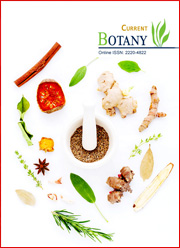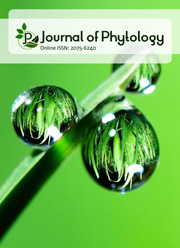A survey of medicinal plants used by the inhabitants in Padiyur, Kangeyam Taluk, Tirupur District, Tamil Nadu, India
DOI:
https://doi.org/10.25081/cb.2025.v16.9553Keywords:
Traditional medicine, Therapeutic preparation, Medicinal plants, Use value, Informant consensus factor, Relative frequency of citationAbstract
In this investigation, the local people were enquired to know about the common medicinal plants and their usage in their day-to-day life. An attempt was made to make a systematic approach to record the local name, binomial name, and mode of administration from the inhabitants of Padiyur, Kangeyam Taluk, Tirupur District. The ethnomedicinal data were collected and documented by randomly planned visits from December 2020 to May 2021. This paper provides the herbal preparations of the medicinal plants which are used till now. A total of 105 species belonging to 47 families were documented. The ethnobotanical work with valid information was analyzed and verified using the Informant Consensus Factor (ICF), Use Value Index (UVI) and Relative Frequency of Citation (RFC).
Downloads
References
Alexiades, M. N., & Sheldon, J. W. (1996). Selected guidelines for ethnobotanical research: a field manual. New York, US: Botanical Garden.
Asiimwe, S., Namukobe, J., Byamukama, R., & Imalingat, B. (2021). Ethnobotanical survey of medicinal plant species used by communities around Mabira and Mpanga Central Forest Reserves, Uganda. Tropical Medicine and Health, 49, 52. https://doi.org/10.1186/s41182-021-00341-z
Baydoun, S., Chalak, L., Dalleh, H., & Arnold, N. (2015). Ethnopharmacological survey of medicinal plants used in traditional medicine by the communities of Mount Hermon, Lebanon. Journal of Ethnopharmacology, 173, 139-156. https://doi.org/10.1016/j.jep.2015.06.052
Bibi, T., Ahmad, M., Tareen, R. B., Tareen, N. M., Jabeen, R., Rehman, S.-U., Sultana, S., Zafar, M., & Yaseen, G. (2014). Ethnobotany of medicinal plants in district Mastung of Balochistan province-Pakistan. Journal of Ethnopharmacology, 157, 79-89. https://doi.org/10.1016/j.jep.2014.08.042
da Silva Menecucci, C. S., Mucellini, K. L., de Oliveira, M. M., Higashi, B., de Almeida, R. T. R., Porto, C., Pilau, E. J., Gonçalves, J. E., Gonçalves, R. A. C., & de Oliveira, A. J. B. (2019). Latex from Tabernaemontana catharinensis (A. DC)—Apocynaceae: An alternative for the sustainable production of biologically active compounds. Industrial Crops and Products, 129, 74-84. https://doi.org/10.1016/j.indcrop.2018.11.036
Gamble, J. S. (1915-1936). Fischer CEC. Flora of the Presidency of Madras. (Vol. 1-3). London, UK: Adlard and Son Ltd.
Ishtiaq, M., & Khan, M. A. (2008). An Ethnopharmacological Inventory of plants used in midwifery in Tehsil Samahni, District Bhimber Azad Kashmir, Pakistan. Indian Journal of Traditional Knowledge, 7(2), 277-283.
Ishtiaq, M., Saleem, M. A., & Razaq, M. (2012). Monitoring of resistance in Spodoptera exigua (Lepidoptera: Noctuidae) from four districts of the Southern Punjab, Pakistan to four conventional and six new chemistry insecticides. Crop Protection, 33, 13-20. https://doi.org/10.1016/j.cropro.2011.11.014
Issa, T. O., Mohamed, Y. S., Yagi, S., Ahmed, R. H., Najeeb, T. M., Makhawi, A. M., & Khider, T. O. (2018). Ethnobotanical investigation on medicinal plants in Algoz area (South Kordofan), Sudan. Journal of Ethnobiology and Ethnomedicine, 14, 31. https://doi.org/10.1186/s13002-018-0230-y
Martin, G. J. (1995). Ethnobotany-A People and Plants conservation manual. Kew, UK: Royal Botanic Gardens.
Naidoo, C. M., Munsamy, A., Naidoo, Y., & Dewir, Y. H. (2022). Chemistry, Biological Activities, and Uses of Latex from Selected Species of Apocynaceae. In H. N. Murthy (Eds.), Gums, Resins and Latexes of Plant Origin (pp. 845-868) Cham, Switzerland: Springer. https://doi.org/10.1007/978-3-030-91378-6_36
Phillips, O., Gentry, A. H., Reynel, C., Wilkin, P., & Galvez-Durand, B. C. (1994). Quantitative Ethnobotany and Amazonian Conservation. Conservation Biology, 8(1), 225-248. https://doi.org/10.1046/j.1523-1739.1994.08010225.x
Seligmann, L. J. (1996). Between Reform and Revolution. Political Struggles in the Peruvian Andes, 1969-1991. California, US: Stanford University Press.
Tardío, J., & Pardo-de-Santayana, M. (2008). Cultural Importance Indices: A Comparative Analysis Based on the Useful Wild Plants of Southern Cantabria (Northern Spain)1. Economic Botany, 62, 24-39. https://doi.org/10.1007/s12231-007-9004-5
Trotter, R. T., & Logan, M. H. (2019). Informant consensus: a new approach for identifying potentially effective medicinal plants. In N. L. Etkin (Eds.), Plants and Indigenous Medicine and Diet (pp. 91-112) England, UK: Routledge.
Umair, M., Altaf, M., & Abbasi, A. M. (2017). An ethnobotanical survey of indigenous medicinal plants in Hafizabad district, Punjab-Pakistan. Plos One, 12(6), e0177912. https://doi.org/10.1371/journal.pone.0177912
Published
How to Cite
Issue
Section
Copyright (c) 2025 M. Devasenathipathi, S. Rajeswari, J. Anuja, S. Athira

This work is licensed under a Creative Commons Attribution-NonCommercial 3.0 Unported License.



 .
.